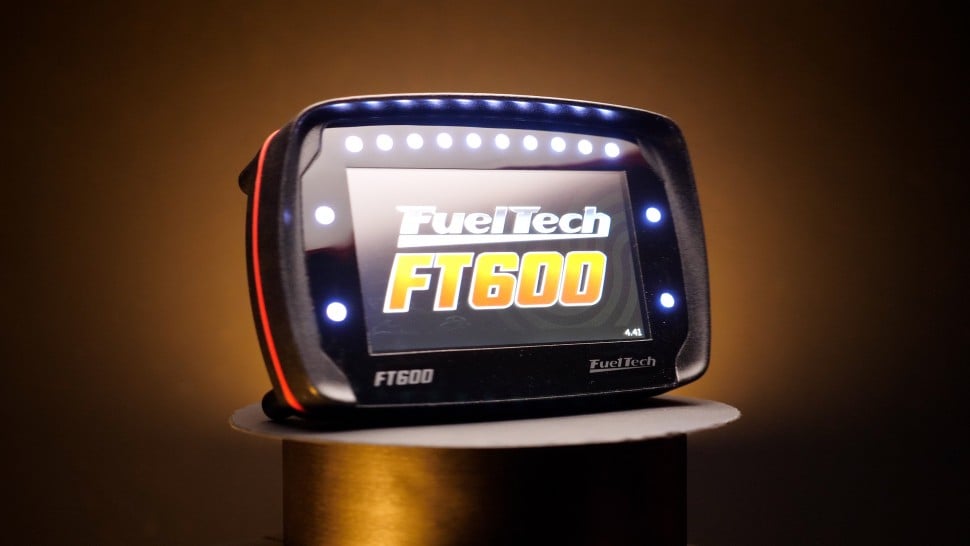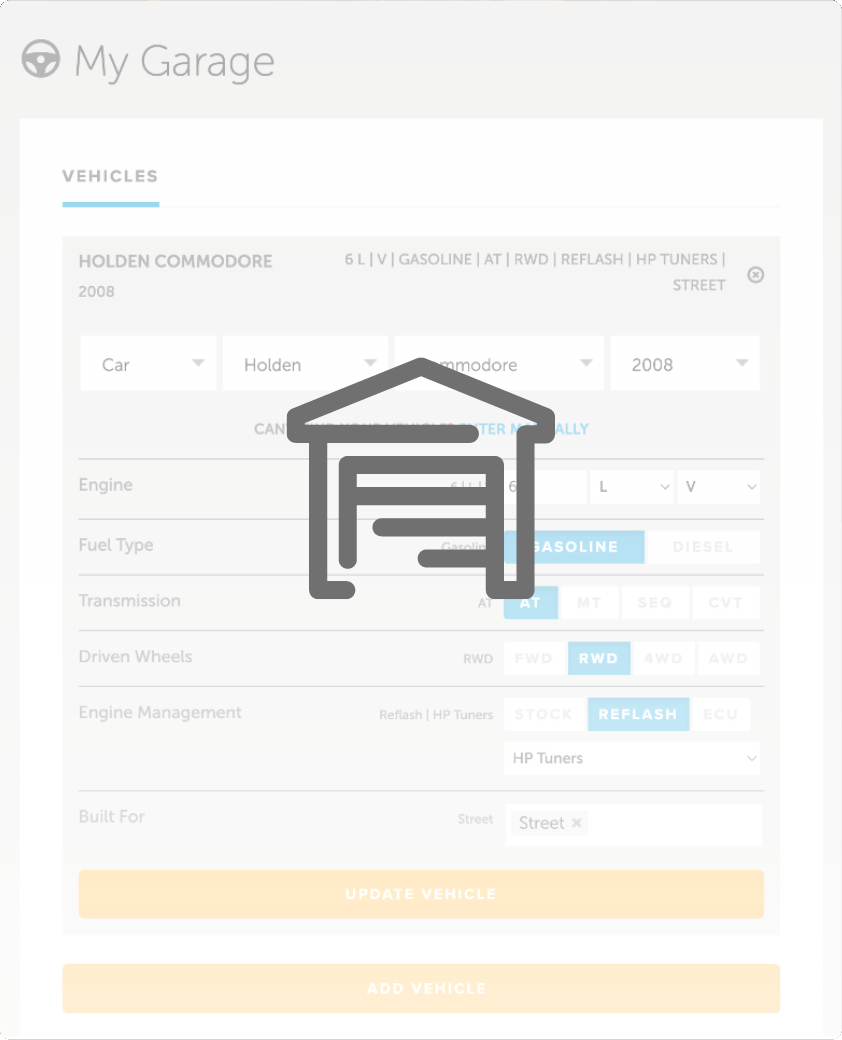| 00:00 |
In the previous section of the course we covered reverse engineering and in this section we'll be looking at the other main use of 3D scans, scan based design.
|
| 00:08 |
In short this involves using scans as a reference to create new designs and personally this tends to be my primary use of 3D scanning.
|
| 00:17 |
Examples of this could be the use of a 3D scan of a motor in an engine bay to design engine mounts for a swap, an interior scan for the design of a roll cage or maybe designing a billet valve cover from a scan of a cylinder head.
|
| 00:32 |
And this is actually a worked example from our 3D modelling and CAD for Motorsport course, if you're interested to see the entire process.
|
| 00:40 |
As you'd imagine though, the possibilities here are vast and the primary benefit is of course having a true scale reference of the parts that our new design needs to fit and function with.
|
| 00:52 |
This not only saves a great deal of time in taking physical measurements, but also provides a visual aid so we can have a better understanding of how everything will work together.
|
| 01:02 |
All of this leading to a better design as a result.
|
| 01:05 |
As a practical example for this work, we'll continue with our S14 suspension upright and working in Autodesk Fusion again.
|
| 01:13 |
But the skills and ideas are completely transferable to other CAD programs.
|
| 01:18 |
At this point though we're still in Peel.CAD and we've taken a scan, completed any post processing, we've also extracted entities from the planar surfaces and also some cylindrical entities like this of the spindle.
|
| 01:31 |
The next step is going to be getting all of this set up in our Fusion software, which is very similar to what we covered in the reverse engineering section of the course so check back if you need a refresher on how to transfer to CAD.
|
| 01:44 |
In our case working between Peel.CAD and Fusion, the transfer option makes this really easy.
|
| 01:51 |
We also need to transfer all of our entities that we want to keep as well.
|
| 02:00 |
And we can see that's come over in full alignment in our Fusion 360 workspace.
|
| 02:05 |
Following this we can also use our entities and mesh section sketches to model the functional features being the spindle, brake caliper mounts, the strut mount, steering knuckle and wheel speed sensor port.
|
| 02:18 |
If anything here doesn't sound familiar then jump back to the relevant topic in the reverse engineering section for a refresher.
|
| 02:25 |
So, if we were just planning to design off a single scan, for example just designing the hub that fit on the spindle of this upright, then this would be all that's really required in terms of the setup.
|
| 02:36 |
We could just start designing the new part within this design file.
|
| 02:41 |
But if we're designing around multiple parts, scans or just existing components, then there are a few key differences.
|
| 02:49 |
But for this example we're going to add a few other parts in the form of a hub and a brake disc as well as another scan of a brake caliper that we prepared earlier.
|
| 02:58 |
We'll be bringing these all together in a design file with the intention of designing a brake caliper bracket, essentially mounting the caliper the correct distance from the upright with the hub and the disc defining its position.
|
| 03:12 |
If you want to follow along, you'll find all these parts below that you can download, unzip the file and then upload them to your Fusion data panel.
|
| 03:20 |
So, we're going to save that file and then we're just going to close it.
|
| 03:23 |
And we're going to start a new design file, but before we can insert any parts into it, we also need to save it.
|
| 03:31 |
So, the next step is going to be finding the upright in our data panel and inserting it into the current design.
|
| 03:38 |
So, this comes in aligned with our coordinate system , which is what we want in this case.
|
| 03:42 |
And it'll automatically be grounded as we can see here.
|
| 03:46 |
If we wanted to change that, we'd just hit unground from parent, but we want it grounded there so we know that it won't move relative to anything else.
|
| 03:54 |
So, next we're going to insert the S14 front wheel hub into the design.
|
| 03:58 |
And this has come in aligned with the coordinate system as well, although not really in the correct position.
|
| 04:05 |
So, we're going to rotate this about 90 degrees and then drag this out of the way for now.
|
| 04:12 |
So, now we're going to set its position and movement relative to the upright.
|
| 04:18 |
So, basically we're going to use a joint for that.
|
| 04:22 |
And then component one will be the hub and we wanna define its position relative to component two.
|
| 04:29 |
So, we're going to set the joint origin on the back of the wheel bearing here and then we're going to set this up to be on the corresponding part of the upright.
|
| 04:37 |
And it might just help to hide the mesh body for this.
|
| 04:43 |
So, if we select that surface or hover over it and then hold control, then we can freeze that and snap to the centre snap point here.
|
| 04:55 |
We can show the mesh body again.
|
| 04:59 |
And we're going to set the motion for this to revolute, to match what the real joint would be like.
|
| 05:06 |
A good way of checking it's in the correct position is to use the section analysis under the inspect tab and then we'll just section through the top plane here and we can see that that's all in the correct position where the wheel bearings would fit onto the spindle.
|
| 05:23 |
So, next up we need to get the brake disc, again right click and insert that into the design.
|
| 05:30 |
Again, we'll just drag this out of the way for now so we can see everything clearly.
|
| 05:34 |
And this brake disc is a two piece construction and it's actually a 300mm outer diameter which is just about as big as we can fit under the 15 inch rally wheels that are on the car that we're designing all of this for.
|
| 05:50 |
So, the same thing here, we can use the joint tool and select the back mounting surface here, hold control again and click the central snap point and then just choose the corresponding point on the mounting face of the hub.
|
| 06:08 |
We can see that fit into place, but we actually want this to be a rigid joint, we'll just hit OK to lock that in.
|
| 06:15 |
And we can see in this case it's also aligned with the studs quite nicely so we don't need to change anything there.
|
| 06:22 |
The critical thing that we want to check at this stage is that the brake friction surface is parallel to the brake caliper mounts on the upright and we can do this by using the measure tool and selecting each of these surfaces.
|
| 06:37 |
So, it's giving us an angle measurement here of a tiny number, which is for all intents and purposes basically zero.
|
| 06:47 |
So, that looks like it is parallel.
|
| 06:50 |
This would be the case on a real upright with these mounts perpendicular to the spindle and we've made sure of this in Peel.CAD earlier on when we were setting up the axis or the plane for the spindle being perpendicular to all those planes that we set up parallel.
|
| 07:07 |
This will also make it easier to do the modelling that we're going to do in the next module and of course when we make the parts in the end, it'll make sure that everything runs true and functions as intended.
|
| 07:18 |
The next step is going to be bringing in the actual brake caliper and we'll jump back into Peel.CAD so we can look at the process of getting this set up in its own design file and there's a few more features that we need to add to this as well.
|
| 07:31 |
So, basically scanned this Wilwood four piston caliper and just used a little bit of tape here, which you can see in the scan and that was just done to make sure the pads were held in the exact location where they would be against the pistons in a real situation.
|
| 07:48 |
Because that's going to be critical moving forward.
|
| 07:51 |
And what I've also done is set up a few entities here and these are just simple planes, we basically have a plane on each side of the caliper and then that was used to create this mid plane here halfway through running down the centreline and also a plane on each side of the mounting points here as well.
|
| 08:10 |
So, fairly simple, all of that's been covered in earlier parts of the course, so be sure to check back to the relevant module in the reverse engineering section if you need a refresher.
|
| 08:22 |
So, the same process goes for transferring this over to Fusion, we just want to make sure we have a new design file open for this to be set up in and then we can come over here and just transfer the mesh over to Fusion.
|
| 08:38 |
And we can see that that's come in in alignment with our coordinate system and then we'll also transfer the entities over as well.
|
| 08:47 |
Check back and we can see that's now all set up there in the coordinate system.
|
| 08:52 |
So, thinking ahead we need a few features in this component to help us align it with our assembly correctly over the brake disc so it's all centred and everything.
|
| 09:02 |
So, basically what we're going to do is we're going to start with a mesh section sketch of the body and we're going to do this through any of the planes since they're all parallel anyway.
|
| 09:13 |
We're going to drag this section here back through the mounting holes so we can map them out first.
|
| 09:19 |
About there looks pretty good, we'll also just group those inserted entities so we can keep things simple and then we'll right click on that mesh section sketch and edit the sketch.
|
| 09:34 |
Like always we're going to drop into fit curves to mesh section and it can always be helpful to hide the mesh for this and we'll also hide those construction planes for now.
|
| 09:45 |
What we're going to do is fit some circles to the mesh section and just to be sure here, we are going to check these and compare them to real measurements from the actual part.
|
| 10:00 |
So, being a Wilwood caliper, US design, these here are 7 16th mounting holes so we can set that up in our Fusion software using 7 16th and then putting the little column afterwards and that will set that to the imperial equivalent since we're working in metric for this course.
|
| 10:23 |
We can also set the distance between these two, checking that again off the real part just to make sure when we go to design the bracket that everything is properly lined up.
|
| 10:35 |
So, in that case, just as our mesh is showing us, we have 89mm spacing on those mounting holes.
|
| 10:45 |
And I'll also just make some larger circles around the outside even though the actual caliper has been modified slightly and just make these, so we have some nice mounting bosses that we can use in our CAD model.
|
| 11:04 |
So, then we'll make the outer circles also equal diameter and then finally what we're going to do is lock down the position of one of the holes and then set the other one in horizontal alignment, because that's going to make things easier for us moving forward.
|
| 11:22 |
Then we'll just finish the sketch.
|
| 11:25 |
Then from here what we want to do is use the extrude tool and basically extrude those mounting bosses setting the start point as an object being the plane on the side of the mounting tabs and then the extent distance up to the other plane on the other side.
|
| 11:48 |
And we just hide the body to make sure we're getting what we want there.
|
| 11:52 |
Hit OK to confirm that.
|
| 11:55 |
So, the other feature that we need is essentially going to be a centre point in the centre of the disc diameter that will allow us to align this with the brake disc when we bring it into the assembly.
|
| 12:07 |
And we're going to use another mesh section sketch for that.
|
| 12:10 |
First, selecting the body and then again any plane since they're all parallel will work.
|
| 12:15 |
And in this case we want to drag the section plane through one of our brake pads, so we get a really clear vision of essentially the outer diameter of the brake pad.
|
| 12:27 |
Because that's going to be critical that we align that up with the outside of the disc.
|
| 12:32 |
So, we'll just hit OK there.
|
| 12:36 |
And now again we're going to edit that mesh section sketch and like always it can be helpful to just hide the mesh so we can clearly see what we're doing.
|
| 12:46 |
We'll try to fit a circle to this.
|
| 12:51 |
You can see it's not really working because the curve kind of continues on.
|
| 12:58 |
So, rather than do that we'll just use a more manual approach and we're going to set up a circle here and we're going to make that circle 300mm diameter to match our disc.
|
| 13:15 |
And then what we're going to do is just make a construction line.
|
| 13:21 |
First, project our mounting bosses.
|
| 13:26 |
We're going to make a construction line between them and then put a point on the midpoint.
|
| 13:34 |
That way we can make our circle be in perfect alignment with those just using the vertical constraint and then it's just a matter of dragging the height down a little bit, so we can line up the circle with the edge of our disc.
|
| 13:52 |
Once we're happy with that it's probably best to lock that in place and again we'll just finish this.
|
| 13:59 |
But as we know the mesh section plane there wasn't on the centre plane of the caliper.
|
| 14:06 |
So, just to finish up what we're going to do is make a sketch on that midplane and all we're going to do is project that midpoint there and then finish the sketch and we'll just hide that so we don't have any confusion moving forward.
|
| 14:27 |
Then it's just a matter of saving our brake caliper design file.
|
| 14:31 |
So, back in our main design file what we can do is open the data panel, find the Wilwood caliper and then we can insert that into our current design.
|
| 14:43 |
So, we'll just drag this out of the way for now, we'll position that in just a moment.
|
| 14:47 |
But something that I wanted to address was on the brake disc component, actually set up a sketch in there similar to what we did for our brake disc and that sketch shown here in the purple, the centre point is essentially at the centre of the disc between the two friction faces.
|
| 15:12 |
So, basically the point we just made for our caliper over here, we want to align that with the centre point of the disc.
|
| 15:20 |
So, naturally for this we're going to use the alignment tool under the modify tab, we're aligning components, we want to align from the point in the middle of the brake caliper and then we want to align that with that sketch point in the middle of our brake disc.
|
| 15:39 |
And we can see that that has brought that into perfect alignment there with our disc.
|
| 15:43 |
And if we zoom in a bit we can see that the outside of the disc there is essentially lined up with the outside of the brake pad as well.
|
| 15:54 |
So, everything's looking pretty promising.
|
| 15:56 |
We'll just select OK for that for now.
|
| 16:00 |
We're not going to capture the position just yet, because there's something else that we need to consider.
|
| 16:05 |
So, it's critical that we have the brake caliper lined up nice and parallel with the brake disc like this so everything is running nice and true and that's going to minimise issues with uneven pad wear, leading to pad taper and all of that leading to brake system compliance, which is one of the key issues you want to avoid with brake systems.
|
| 16:25 |
The other thing that we need to consider is the actual mounting angle of the caliper and that is critical to being able to bleed the caliper and remove air from the system, so the hydraulics function correctly.
|
| 16:38 |
And the eagle eyed among you might have noticed that we're going to be mounting the caliper on the other side here and the actual nipples are going to be on the bottom, but I will just mention that this bridge on this side can be removed and replaced over here and the left and right side calipers are exactly the same other than that so in terms of actually designing our mounting bracket, there's no issue with doing it with the right caliper rather than the left one, it's just in this case we have a scan of the other caliper.
|
| 17:12 |
So, what we're going to do here is use the move tool, set the move object to a component and then click the caliper.
|
| 17:20 |
What we're going to do is we're going to set the pivot point in the centre of the caliper and what we'll do for that is we'll just use our sketch that we aligned before with the other sketch in the middle of the brake disc.
|
| 17:36 |
Once we've set the pivot we just need to click done on that.
|
| 17:42 |
And then we will view the other parts again and just look straight on at that.
|
| 17:48 |
So, the brake caliper on the rear will be easier to view and then we're going to rotate this around into the correct position.
|
| 17:57 |
And we can see that the spacing of the brake caliper mounts are pretty similar to that of the upright so we're going to run into issues when we come to try to align these and obviously that's what we're making the brake caliper bracket for.
|
| 18:12 |
So, a manufacturer will typically specify for brake calipers that they need to be within about 15 degrees from completely vertical so that means it can't be more than 15 degrees this direction or 15 degrees this direction.
|
| 18:31 |
So, I actually checked earlier, the angle of the mounts on the upright here are actually at 13 degrees already, so you imagine if we go around this way more, we're definitely going to be moving past that recommended 15 degrees or so.
|
| 18:47 |
And to minimise the angle of the caliper, it's best if we move just around here, just so we have enough space to clear the mounting bosses here and we will just hit OK to confirm that for now and a good way of checking the angle is we can just make a sketch on the back of the mounting boss here, we'll capture that position for now and we'll just project these two parts, mounting bosses here and then we can draw a line between their centres and then we'll also just draw a vertical line here and we can see that it looks like we've just gone over that 15 degrees here to 15.9, but we're pretty close to being within that window and we've done our best to minimise it in this case so we shouldn't really run into any issues with that so pretty happy with that, we can finish that sketch, actually just delete it because it's not required.
|
| 19:46 |
So, this is assuming that the upright would actually be in this perfect vertical position here and we know since this has a rear mounted rack on this car, the steering knuckle here is behind the axle.
|
| 19:59 |
If we have caster in the car then there will be an angle where the upright will go like this and that'll actually help us out a little bit and bring the caliper into a more vertical position.
|
| 20:10 |
So, now that we're happy with the position of the caliper, we just want to lock that in.
|
| 20:14 |
So, what I'm going to do here is just click the two parts being the upright and the caliper in the browser and then right click and create a rigid group so they cannot move relative to one another.
|
| 20:27 |
And that covers off our setup in CAD, so now we're ready to move on in the next module and design our brake caliper bracket.
|
| 20:36 |
Before we do that though, let's recap the key takeaways from this module.
|
| 20:39 |
The proper setup of mesh bodies and parts in our workspace for scan based design is crucial.
|
| 20:46 |
If we're just designing off a single scan, then we can insert the mesh into our workspace, make sure it's aligned with our coordinate system and move on to the next steps.
|
| 20:55 |
But when working with multiple parts, it's helpful to set them up as individual components and this way we can ground the first component that we bring into the workspace.
|
| 21:04 |
Then as we bring in any other components and align them or position them in the desired location, we can also ground them or set up rigid groups to lock down any parts to avoid anything moving by accident.
|
| 21:16 |
Alternatively, joints can also be used to define the relative positions and movements between parts for a more accurate representation of the real thing.
|
| 21:25 |
For this to be possible, with mesh bodies we need to create entities like datum planes, points or axes, solid bodies or even sketch points.
|





